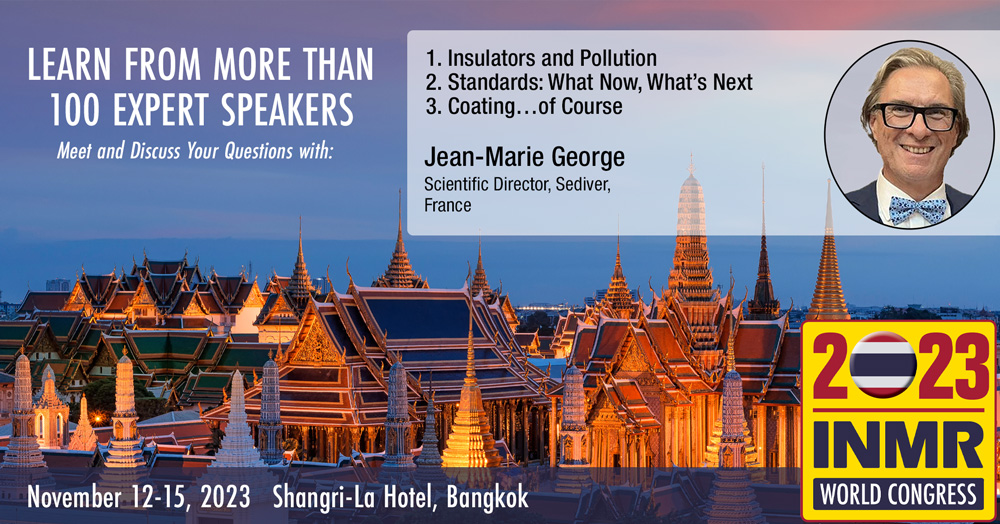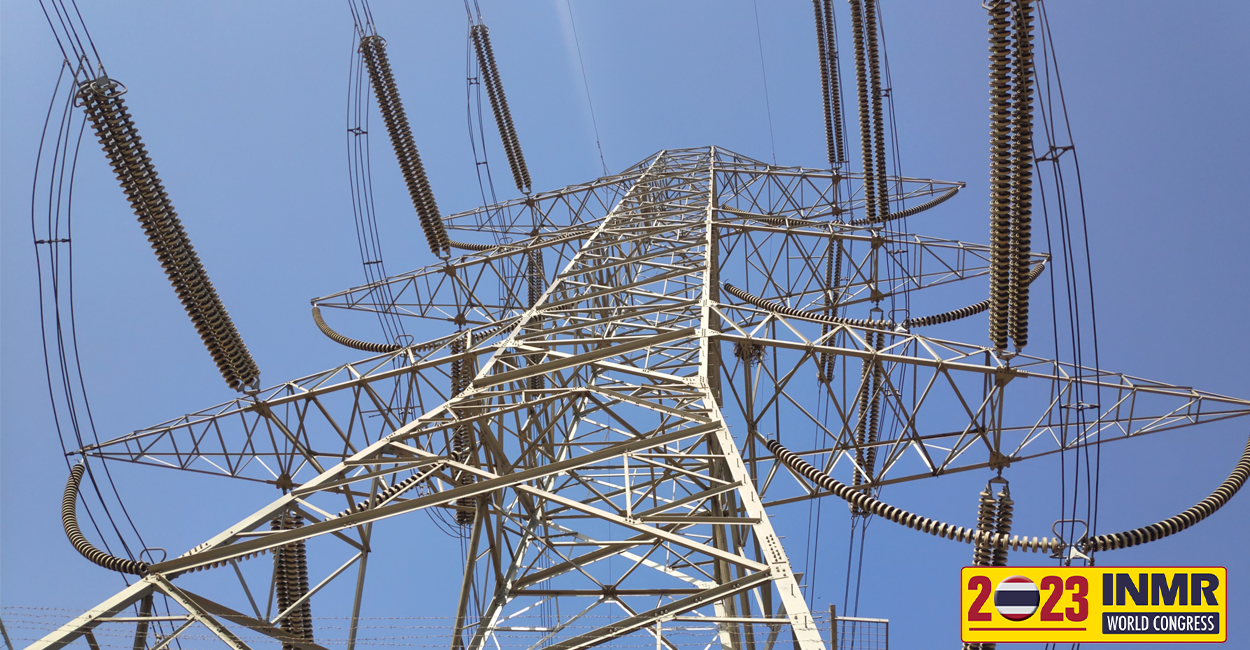During the last INMR conference, our scientific team presented three technical papers.

Standards: what now, what’ s next ?
Author: Jean Marie George – SEDIVER
Standards are in the background of any industry but often the dynamics of standardization are ignored by most users except those who are either directly involved in their design or those who need to use them directly such as engineers at the design stage or manufacturers of goods. As far as overhead line insulation is concerned, standards are perceived as “slow moving entities”, and this is perhaps a good thing given the nature of the utility world which is conservative and usually resistant to adopt new materials, new designs, new habits. Given the size and strategic importance of the assets at stake it can simply be called prudence.
In the world of overhead line insulators IEC is the dominant actor and numbers of national standardization committees adopt in one way or another the content of the work produced by IEC expert groups.
It appears that the global evolution of our climates wherever we are on the globe will quickly require another approach to make the grid more resilient and capable to cope with elevated temperatures or new stress conditions. New tests certainly need to be crafted and existing test procedures modified to adjust with the changes we see now more often every year…and perhaps it is urgent.
To read more, please download the pdf of the technical paper.
Pollution and insulators
Authors: Jean Marie George, Damien Lepley, Fabien Virlogeux – SEDIVER
Pollution of insulators is one of the most critical parameters in the continuity of operation of overhead lines in many countries either because of industrial, coastal or airborne dusty environments. While dielectric strength characteristics of insulator strings are vary basically defined by air gaps for lightning and switching, it is a much deeper technical question involving shape of insulators as well as material and surface properties when it comes to contamination.
This paper gives several directions, options and results helping line design engineers to cope with this question. Shape, HTM properties (hydrophobicity of the surface of the insulator) and other considerations are discussed including for HVDC applications based on latest test results and standard evolutions.
To read more, please download the pdf of the technical paper.
Coating…of course
Authors: Jean Marie George, Dr Sandrine Suc, Fabien Virlogeux – SEDIVER
The title of this paper can appear slightly provocative, but, it describes extremely well the current trend worldwide whenever high pollution conditions require special care in the definition of an insulator string and the relevant specific creepage distance.
While originally this technique was used by maintenance for mitigating problems encountered in service, the use of RTV coating on glass and porcelain discs has jumped to a point where it can no longer be considered as a marginal approach for solving a local problem but clearly part of the design of new transmission lines.
The major push came from the decision taken more than 20 years ago to establish a product which performances were established through an industrial process where the insulators were coated in a factory [1], in controlled conditions rather than in the field where the difficulty of outdoor conditions can compromise the long-term performance of the product.
To read more, please download the pdf of the technical paper.
The information collected through this form are processed by SEDIVER, a simplified joint stock company, registered with the Nanterre Trade and Company register under number 542035761 and whose headquarter is located 7/9 allée de l’Arche 92400 Courbevoie for the purpose of allowing the download of our whitepaper documents and to send you information about our group’s companies and products. The legal basis for these processing activities is our legitimate interest to know who access and download our resources and to send them direct communication.
Fields marked with an asterisk (*) are required information. Should you fail to give this required information, you will not be able to download our whitepaper documents.
You have a right of access, rectification, erasure and limitation with regard to the processing of your personal data as well as the right to define guidelines regarding what happens to your data after your death and the right of portability of your personal data, to the extent applicable under local legislation. You also have a right to object to the receipt of marketing communication by ticking the dedicated box of this form, and at any time by clicking on the unsubscribe link placed in all our marketing communications.
To find out more about how we process your personal data and to exercise your rights, please refer to the SEVES group EU privacy policy and the SEDIVER privacy policy.
For more information, please consult our Privacy Policy.
 English
English
